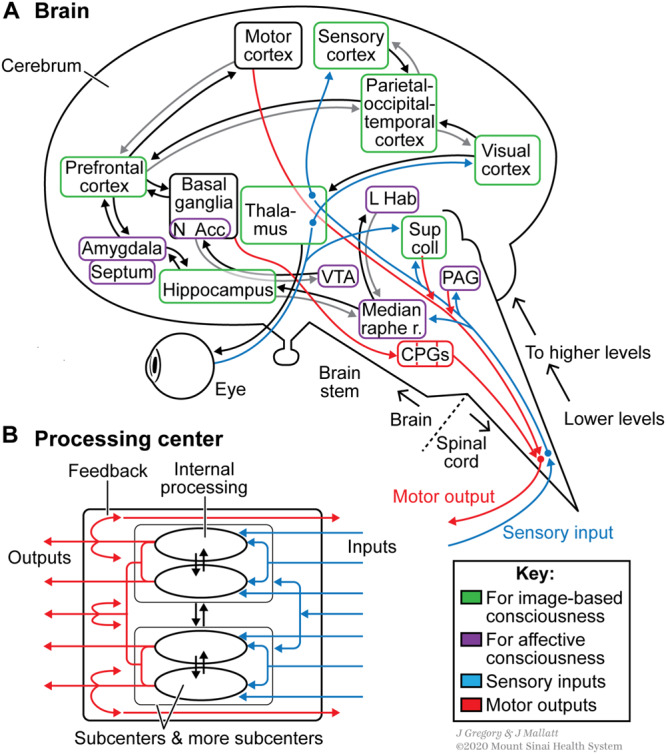FIGURE 3.

Some special neurobiological features of conscious systems, shown by the human brain and nervous system. These features include elaborate sensory organs (e.g. eye), neural hierarchical levels from the spinal cord upward, extensive reciprocal communication between neural processing centers (the rectangular boxes and the connecting arrows), and processing centers for image-based versus affective consciousness (green versus purple boxes). For more, see Table 2, Level 3. (A) Consciousness relies on processing centers that are widely distributed but integrated. While neural processing goes on within the centers, communication also occurs among the centers, leading to both local functional specialization and global coherence. (B) Schematic drawing showing processing within a center. The center has subcenters for subprocessing operations that are subsequently integrated to produce the center’s outputs. Abbreviations in (A) are CPGs: central pattern generators for various stereotyped movements; L Hab: lateral habenula; Median raphe r.: median raphe region of the reticular formation; N Acc: nucleus accumbens; PAG: periaqueductal gray; Sup coll: superior colliculus (optic tectum) of midbrain; VTA: ventral tegmental area of the midbrain. Figure © Mount Sinai School of Medicine.
